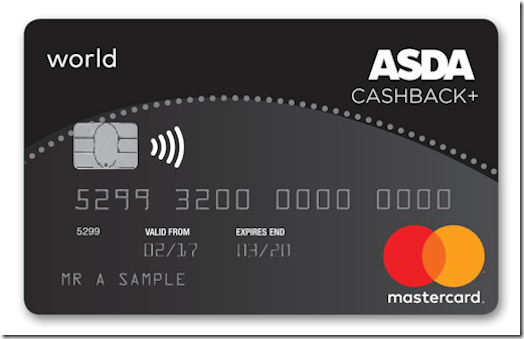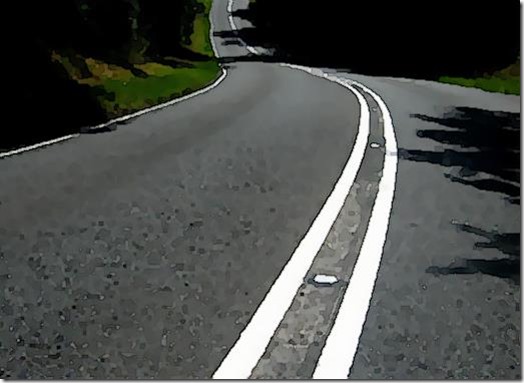 My article, Should I Become A Driving Instructor, is very popular. If you’re thinking of moving into this industry as a result of losing your job during the last 9 months, you might want to read it. Yes, it’s a long article, and if you don’t have the attention span to get through it then maybe you ought to reconsider this career path. But it contains information about the realities of the job.
My article, Should I Become A Driving Instructor, is very popular. If you’re thinking of moving into this industry as a result of losing your job during the last 9 months, you might want to read it. Yes, it’s a long article, and if you don’t have the attention span to get through it then maybe you ought to reconsider this career path. But it contains information about the realities of the job.
One thing that crops up time and time again on social media (it used to be certain web forums, but time affects all things) is the issue of how much it costs to become an instructor, and therefore raises the second issue of avoiding franchise companies at all costs. Let’s take a look at things properly.
When you’re an ADI you will often get new learners whose first question is ‘how many hours will it take me to learn?’ Roughly translated, they mean ‘how much will it cost me?’ It’s the one question that has no absolute answer, and which immediately puts you in an awkward situation. Do you tell them the truth based on official figures, or do you tell them what they want to hear and show yourself up if they don’t achieve what you told them later?
When I first meet them, I try to rationalise the concept of ‘average’, and point out that DVSA statistics say that the average new driver takes around 45 hours of lessons with an instructor along with 20 or more hours of private practice with a family member or friend. I then point out that I have had people do it from scratch in as little as 14 hours (with lots of private practice), and others take as long as 160 hours (with and without private practice). The vast majority take between 25-50 hours (with or without private practice). Some initially lead you to believe they’ll never learn, and yet do it in less than 40 hours, and others who you’d bet money on passing keep screwing up and end up taking 80. So the average comes out somewhere in the middle, with some individuals being at either end of the whole range.
The problem is that many will listen to all this, and only hear ‘blah-blah-blah-14-hours-blah-blah’. They’re not uncommon – I had one a couple of years ago who’d never driven except for going out once or twice with his mum, and triumphantly announced after his tenth one-hour lesson: ‘that’s it, I’m ready for my test’ (he wasn’t). And I’ve lost count of those who have budgeted based on a fixed amount of money that they want to spend, and then go white when you explain the realities. Basically, for a new learner, learning to drive could take anywhere from 14 hours (in my experience) to almost 200 hours, with the average being somewhere around 30-40. And you can’t pick which one you like best and just do that. All things considered, it means that if their lessons cost £27 an hour, they are likely to end up paying out nearer £1,000 plus the cost of their test(s). It’s just how it is.
When it comes to training to be a driving instructor, far too many people only hear ‘blah-blah-blah-earn-£30,000-blah-blah-hours-to-suit-yourself-blah-blah’. But the same variables are involved. After all, a trainee instructor is identical to a learner driver in many respects – they have to pass a test. Three tests in the case of instructors.
First of all, you have to get through the theory (Part 1 of ADI training). Every time I do it using an app, I score 99%-100% (and I kick myself if it’s the 99% one) against the 85% pass mark. But the real pass rate for Part 1 the last time I looked is only around 50%, which is worth thinking about. You don’t need to pay anyone to train you for it. Next comes the ADI driving test (Part 2). It’s harder than a normal learner test in that you’re allowed fewer faults, need to complete more manoeuvres, drive for longer and further, and are generally expected to be of a higher standard than a new driver. Finally, there is how well you can teach others (the Part 3 test), which is probably the hardest of all because it will involve new material for most people.
You can take Part 1 as many times as you like (you could take it once every few weeks for the rest of your life if you wanted), but once you pass it you then have two years in which to complete the Part 2 and 3 tests. You are only allowed a maximum of three tries at each of these within that two-year window, and if you fail one of them more than that – or if you don’t pass Part 3 within the two-year window – you go straight to jail, do not pass ‘GO’, and have to start the entire process again once the two years are up. It is quite possible for this to happen, and it is even more possible that you will take at least one of the tests more than once.
When a learner driver fails their driving test they almost always need further remedial lessons before their next try. The same applies to someone trying to become a driving instructor, compounded by the fact that they will likely have invested more money and even planned their future around succeeding than a learner driver will have.
So how many hours are involved? In the article, Should I Become A Driving Instructor, I detail the exam costs and likely training costs. Let’s cover them again here. You can think of Part 1 as 0 hours if you do it yourself. For Part2, around 10 hours of lessons is average for a decent driver. For Part 3, let’s just say 40 hours for now. And the hourly rate for those lessons is likely to be in the range £30-£40 (let’s stick with £30 for the purposes of this discussion).
The Part 1 test costs £81 at the time of writing. Parts 2 and 3 cost £111 each. That’s a total of £303 just for doing each of the tests once.
The cost of training for Part 2 would come £300. For Part 3 it would amount to £1,200. So assuming you passed all the tests first time, and only did the average number of training hours mentioned above, your total outlay if you were paying by the hour would be £1,800. And if you did pass, you’d need to spend another £300 on your green badge before you could teach.
If you failed Part 2 the first time, you’d need to pay another £111 for a test, and any additional training – let’s say 4 hours, so £120. If you then passed Part 3 on your first attempt, you’d now have spent over £2,000. It would be your choice, but not doing any additional training would be unwise if there were issues to resolve. But as with what I said above, some people only hear ‘blah-blah-blah-pass-first-time-blah-blah’.
Now, although we said 40 hours for Part 3 training, some people might find this part a struggle and would need maybe 50 hours – sometimes even more. That additional 10 hours would add another £300 on to the overall cost, plus any additional tests if they had failed the first. Now they’d have spent over £2,300 – more if we include tests. And even if someone took only the average number of hours, but three attempts at each of Parts 2 and 3, their total outlay would be £2,250.
And just like any learner, you cannot pick in advance how much it ends up costing. Because what eventually happens is what it is. All you can say is that if you pay £30 an hour, and if you take the bare minimum amount of training, and if you pass each test first time, you will be paying at least £1,800. This is the pay-as-you-go (PAYG) approach that social media will tell you is the cheapest way.
Now let’s look at some packages available – the pay-up-front approach. I’m not going to mention any by name because I am not recommending any one of them above the rest.
One is currently advertising a Black Friday discount of £888 for a full course, including 52 hours of in-car training. The normal price is £1,000. Others come in at anywhere from £1,000-£2,000, and include up to 80 hours of training. At least one offers a money-back guarantee (there are conditions attached), and another offers a full refund of the course cost if you qualify and go into a franchise with them (conditions also attached, such as minimum term of contract). All of them offer inclusive remedial training (conditions attached, of course, such as there comes a time when enough is enough). But the important detail is the remedial training if you need more than the average number of hours – it’s inclusive up to a point, whereas on PAYG you just pay more for it no matter what.
During the lockdown I’ve had a lot of people asking me about training to become ADIs. One told me that a PAYG trainer had insisted on a minimum of 30 hours for Part 2 and 50 hours for Part 3 – that would amount to £2,700 even if you passed everything first time, and if the hourly rate was only £30 (it wasn’t specified). I would imagine that this isn’t a unique situation, either.
In all these examples – PAYG or package – the instructors are ORDIT-registered trainers. A trainer doesn’t automatically become bad simply because he is working for a company, or even if the company is one you’ve been conditioned to dislike because of what you’ve read on social media. You will be getting a similar standard of training however you do it and – as the example I just gave perhaps shows – any slightly bad apples might not necessarily be in the barrel you assumed they’d be in.
How you choose to train is up to you. But don’t be misled into thinking one way is either better or cheaper than another simply because of what you read in social media.
 A
A  An
An 
 I’ve mentioned this before in several articles. There was
I’ve mentioned this before in several articles. There was  Social media has been in meltdown all day because of the usual idiots and their ‘can we work or can’t we work’ nonsense. The answer was obvious to anyone smarter than a chimp,
Social media has been in meltdown all day because of the usual idiots and their ‘can we work or can’t we work’ nonsense. The answer was obvious to anyone smarter than a chimp,  You have to laugh. Right from the start of the pandemic – with the requirement to wear a mask (unless you are a twat or genuinely exempt) – glasses steaming up has been a problem. If you go by social media, anything from washing up liquid, through squirrel pee, shaving foam, all the way up to 20ml bottles of over-priced chemicals is the way forward.
You have to laugh. Right from the start of the pandemic – with the requirement to wear a mask (unless you are a twat or genuinely exempt) – glasses steaming up has been a problem. If you go by social media, anything from washing up liquid, through squirrel pee, shaving foam, all the way up to 20ml bottles of over-priced chemicals is the way forward. Well, we have a vaccine, but we’re not out of the woods yet. We’re close, but not in time to ‘save Christmas’.
Well, we have a vaccine, but we’re not out of the woods yet. We’re close, but not in time to ‘save Christmas’. This article is from 2015, but it’s had a run of hits lately and is therefore due an update.
This article is from 2015, but it’s had a run of hits lately and is therefore due an update. My article,
My article,